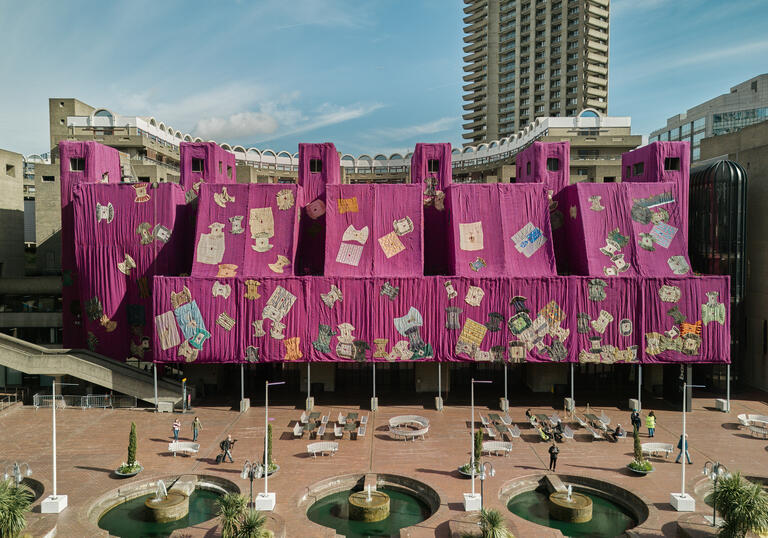Over time, some of the fabric in our lives gains a deeper value, past its material worth. For some, it’s their sister’s patchwork baby blanket, the dress their mum wore when their parents met, or the woven bracelet from their high-school sweetheart.
In Northern Ghana, robes called Batakaris are passed down through generations. These smocks were originally grand garments worn by kings and later presidents, now many families own them, which they will pass down from generation to generation.
Made up of strips of cotton that are woven by hand on looms, Batakari are often striped and sometimes have detailed embroidery around the neckline. It is believed that they carry the imprints of the figures they once clothed and represent a cycle of knowledge passed down through generations.
Artist Ibrahim Mahama was deeply inspired by these precious fabrics. Talking about batakaris and their influence on our latest commission, Purple Hibiscus, he says:
‘I was very interested in this idea of the history of the body and the soul somehow absorbed into the material. It really struck me, in terms of how this material is like an envelope; it allows us to be able to contain things.’
Mahama often works with fabrics. Previously, he has worked with jute sacks that carried cocoa beans around the world. In his commission for the Barbican, Mahama worked with hundreds of craftspeople in Ghana to weave a 2,000sqm piece tailored to our building. On it, many batakari are embroidered like blooming flowers.
‘Seeing the robes in this new surrounding allows us to consider history in a new context,’ Mahama says. In showing these grandiose fabrics in this way, Purple Hibiscus allows visitors to consider Ghana and its history in relation to the UK and its own history.’
‘Batakari are traditional garments that used to be made for royalty, and subsequently, they became commonplace – everyone can own one. I’ve always been very much interested in them because of the histories they carry, particularly the ones that have been woven and worn by people, and passed on from one generation to the other.’
‘They were very difficult to access because these are not materials that are not just given away like that. It’s very much tied to people’s histories, their pride.’
‘So, for instance, if my grandfather has it he passes it onto his father, his father passes it onto you.’
‘When the material breaks, they have an interesting way of repatching it, and most often they don’t even wash it. Because when you take it, you realise that there are all these interesting stains within them, so the body fluid, sweat and everything is attached onto it. People feel like it’s an extension of their bodies. Their soul is somehow encapsulated within the fabric.’
‘For me, that’s what really sparks my imagination. The inclusion of these important garments in the installation has added more history, more colour, more texture. It gives materials a deeper versatility. Which is why I keep coming back to look at this stunning installation.’
Ibrahim Mahama: Purple Hibiscus, Lakeside
Words by James Drury

